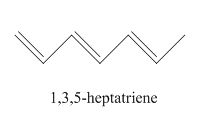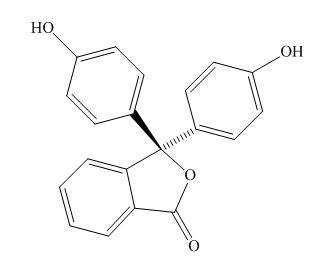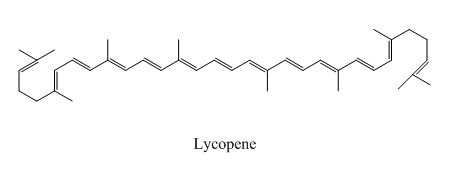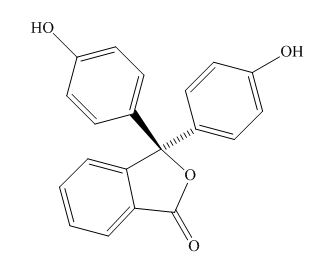
(a)
To determine: The experiment that determines the energy absorbed by the given compounds.
(a)
Answer to Problem 1DE
Solution: The experiment that determines the energy absorbed by the given compounds is UV-visible spectrometry.
Explanation of Solution
The energy absorbed by the given compound is calculated by the formula,
Plank’s constant and
The experiment that makes possible to measure the wavelength of the light absorbed by the compound is UV-visible spectrometry.
The maximum wavelength absorbed by the solution of the compound is determined and substituted in the above formula.
Thus, the energy absorbed by the compound is determined.
The experiment that determines the energy absorbed by the given compounds is UV-visible spectrometry.
(b)
To determine: The dependency of the excitation energy on the length of the conjugated system.
(b)
Answer to Problem 1DE
Solution: The increase in the length of the conjugated system causes decreases in the excitation energy.
Explanation of Solution
The
The, distance between the ground state and the excited state determines the energy needed for the excitation.
As the length of the conjugated system increases, the distance between the atom in the chain decreases and hence the distance between the ground state and the excited state decreases. Therefore, the excitation energy decreases.
Thus, the increase in the length of the conjugated system causes decreases in the excitation energy.
The increase in the length of the conjugated system causes decreases in the excitation energy.
(c)
To determine: The additional molecule required to test the energy dependency on the length of the conjugated system.
(c)
Answer to Problem 1DE
Solution: The additional molecule required to test the energy dependency on the length of the conjugated system are
Explanation of Solution
The dependency of the excitation energy on the length of the conjugated system is tested by measuring the
The examples are,

Figure 1
Phenolphthalein

Figure 2
Lycopene

Figure 3
The above examples absorb light of different wavelength, depending upon their conjugation length.
Phenolphthalein,
(d)
To determine: The dependency of the absorption of energy on the delocalization of the electron.
(d)
Answer to Problem 1DE
Solution: The dependency of the absorption of energy on the delocalization of the electron is explained using phenolphthalein.
Explanation of Solution
The excitation of the
The structure of the phenolphthalein is,

Figure 2
Phenolphthalein is acidic in nature due to the presence of the phenolic hydroxide group. Thus, in the acidic solution, the hydroxide group is not ionised. In the basic solution, the hydoxide group ionizes to form oxide ion that takes part in the resonance and stabilizes the
Phenolphthalein in the acidic solution is colorless, while that in the basic solution is colored. The reason for the same is that, the delocalisation of the electrom takes place in the basic solution and is absent in the acidic solution. Hence, unless the electrons are not delocalised, excitation of the electrons does not take place.
The dependency of the absorption of energy on the delocalization of the electron is explained using phenolphthalein.
Want to see more full solutions like this?
Chapter 9 Solutions
CHEMISTRY: THE CENTRAL SCIENCE
- Epoxides can be opened in aqueous acid or aqueous base to produce diols (molecules with two OH groups). In this question, you'll explore the mechanism of epoxide opening in aqueous acid. 2nd attempt Be sure to show all four bonds at stereocenters using hash and wedge lines. 0 0 Draw curved arrows to show how the epoxide reacts with hydronium ion. 100 +1: 1st attempt Feedback Be sure to show all four bonds at stereocenters using hash and wedge lines. See Periodic Table See Hint H A 5 F F Hr See Periodic Table See Hintarrow_forward03 Question (1 point) For the reaction below, draw both of the major organic products. Be sure to consider stereochemistry. > 1. CH₂CH₂MgBr 2. H₂O 3rd attempt Draw all four bonds at chiral centers. Draw all stereoisomers formed. Draw the structures here. e 130 AN H See Periodic Table See Hint P C Brarrow_forwardYou may wish to address the following issues in your response if they are pertinent to the reaction(s) you propose to employ:1) Chemoselectivity (why this functional group and not another?) 2) Regioselectivity (why here and not there?) 3) Stereoselectivity (why this stereoisomer?) 4) Changes in oxidation state. Please make it in detail and draw it out too in what step what happens. Thank you for helping me!arrow_forward
- 1) Chemoselectivity (why this functional group and not another?) 2) Regioselectivity (why here and not there?) 3) Stereoselectivity (why this stereoisomer?) 4) Changes in oxidation state. Everything in detail and draw out and write it.arrow_forwardCalculating the pH at equivalence of a titration 3/5 Izabella A chemist titrates 120.0 mL of a 0.7191M dimethylamine ((CH3)2NH) solution with 0.5501 M HBr solution at 25 °C. Calculate the pH at equivalence. The pk of dimethylamine is 3.27. Round your answer to 2 decimal places. Note for advanced students: you may assume the total volume of the solution equals the initial volume plus the volume of HBr solution added. pH = ☐ ✓ 18 Ar Boarrow_forwardAlcohols can be synthesized using an acid-catalyzed hydration of an alkene. An alkene is combined with aqueous acid (e.. sulfuric acid in water). The reaction mechanism typically involves a carbocation intermediate. > 3rd attempt 3343 10 8 Draw arrows to show the reaction between the alkene and hydronium ion. that 2nd attempt Feedback 1st attempt تعمال Ju See Periodic Table See Hint F D Ju See Periodic Table See Hintarrow_forward
- Draw the simplified curved arrow mechanism for the reaction of acetone and CHgLi to give the major product. 4th attempt Π Draw the simplified curved arrow mechanism T 3rd attempt Feedback Ju See Periodic Table See Hint H -H H -I H F See Periodic Table See Hintarrow_forwardSelect the correct reagent to accomplish the first step of this reaction. Then draw a mechanism on the Grignard reagent using curved arrow notation to show how it is converted to the final product. 4th attempt Part 1 (0.5 point) Select the correct reagent to accomplish the first step of this reaction. Choose one: OA Mg in ethanol (EtOH) OB. 2 Li in THF O C. Li in THF D. Mg in THF O E Mg in H2O Part 2 (0.5 point) Br Part 1 Bri Mg CH B CH, 1 Draw intermediate here, but no arrows. © TE See Periodic Table See Hint See Hint ין Harrow_forwardSelect the product for the following reaction. HO HO PCC OH ○ OH O HO ○ HO HO HOarrow_forward
- 5:45 Х Select the final product for the following reaction sequence. O O 1. Mg. ether 2.D.Oarrow_forwardBased on the chart Two similarities between the molecule with alpha glycosidic linkages. Two similarities between the molecules with beta glycosidtic linkages. Two differences between the alpha and beta glycosidic linkages.arrow_forwardplease help fill in the tablearrow_forward
 ChemistryChemistryISBN:9781305957404Author:Steven S. Zumdahl, Susan A. Zumdahl, Donald J. DeCostePublisher:Cengage Learning
ChemistryChemistryISBN:9781305957404Author:Steven S. Zumdahl, Susan A. Zumdahl, Donald J. DeCostePublisher:Cengage Learning ChemistryChemistryISBN:9781259911156Author:Raymond Chang Dr., Jason Overby ProfessorPublisher:McGraw-Hill Education
ChemistryChemistryISBN:9781259911156Author:Raymond Chang Dr., Jason Overby ProfessorPublisher:McGraw-Hill Education Principles of Instrumental AnalysisChemistryISBN:9781305577213Author:Douglas A. Skoog, F. James Holler, Stanley R. CrouchPublisher:Cengage Learning
Principles of Instrumental AnalysisChemistryISBN:9781305577213Author:Douglas A. Skoog, F. James Holler, Stanley R. CrouchPublisher:Cengage Learning Organic ChemistryChemistryISBN:9780078021558Author:Janice Gorzynski Smith Dr.Publisher:McGraw-Hill Education
Organic ChemistryChemistryISBN:9780078021558Author:Janice Gorzynski Smith Dr.Publisher:McGraw-Hill Education Chemistry: Principles and ReactionsChemistryISBN:9781305079373Author:William L. Masterton, Cecile N. HurleyPublisher:Cengage Learning
Chemistry: Principles and ReactionsChemistryISBN:9781305079373Author:William L. Masterton, Cecile N. HurleyPublisher:Cengage Learning Elementary Principles of Chemical Processes, Bind...ChemistryISBN:9781118431221Author:Richard M. Felder, Ronald W. Rousseau, Lisa G. BullardPublisher:WILEY
Elementary Principles of Chemical Processes, Bind...ChemistryISBN:9781118431221Author:Richard M. Felder, Ronald W. Rousseau, Lisa G. BullardPublisher:WILEY





